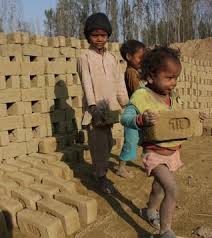In the state of Bihar, pre-occupied with caste politics, are any of the political parties committed enough to address one of the hazardous issues -brick kilns’ adverse impact on environment?
Bypassing the environmental norms, continuous emission from some six hundred brick kilns regularly mutltiply the density of air pollutants in the Bihar capital. The fuels used in the brick kilns- agri-wastes, powder coals and used tyres- can also be linked to 15 percent of total premature deaths due to air pollution. Some of the long portion of the Ganga is so much covered by these kilns that it is reflected by the name of the area- “Chimney ghat”!
According to a study on particulate pollution and health impacts, these brick kilns are behind 11 percent of the total air pollution in Patna. Some experts also deliberated the harmful impacts of brick kilns on the river that the Ganga has shifted its course near digha due to construction of brick kilns. Apart from erosion of soils, the waste material dumped from these brick kilns have also led to the change in the course of the Ganga at Digha.
Principal Secretary in charge of the mines and geology department, B Pradhan, said that existing norms for granting permission to kilns are too complicated and need to be changed but there is no dedicated body for monitoring kilns. Senior officials are preparing draft to make crucial changes in no objection certificate (NOC) norms to put an end to kilns along National River.
But this will not be an easy task to achieve since the brick kiln lobby is a powerful one in the state as well as the major source of livelihood for the rural people living by the Ganga side. As election is round the corner, it will be worth to see whether political parties will announce their agenda to gain vote bank primarily or define the development and safety trail of the state. Ultimately, time will justify whether the government really cracks the whip!
[Content prepared by Ravi Ranjan Kumar]


